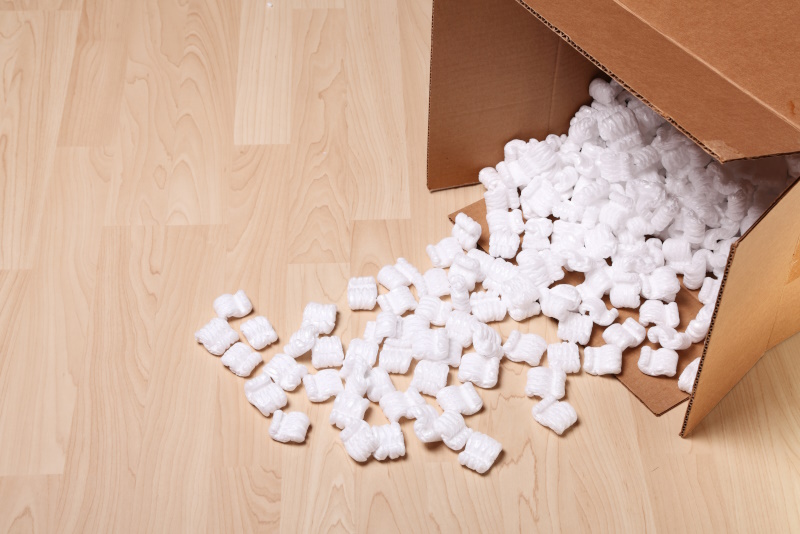
When many people hear “peanuts” and “history” in the same sentence, George Washington Carver’s inventions or Jimmy Carter’s farm often come to mind. However, there’s one “peanut” with a rich backstory that has nothing to do with the actual legume.
Packing peanuts are among the best packing materials for providing essential cushioning and shock absorption for items in transit. Although it’s difficult to imagine a time when they weren’t used, packing peanuts haven’t always been the shipping staples we know and love. Before the styrofoam morsels we’re familiar with today, people filled empty box space with shredded paper, sawdust, wood fibers, and even actual popcorn. However, these solutions weren’t particularly efficient, which led to the invention of what we now refer to as the packing peanut .
Keep reading to learn more about how wholesale packing peanuts got their start and why their popularity doesn’t seem to be slowing down anytime soon.
According to The New York Times, the history of the packing peanut , sometimes referred to as flowable loose fill, begins with Maurice Laverne Zweigle, a research chemist. He secured a raw egg inside a box with what he and his employer Dow Chemical Company initially called polystyrene “spaghetti.”
When he had sealed the flaps, he tossed the package off a third-floor roof, and miraculously, it worked. Because the tubes formed a nest around the egg, it was still completely intact when the box was reopened.
In 1961, Dow Chemical Company presented the product at a plastics exposition at the New York Coliseum. It was sold in 200-pound drums and marketed as a substitute for more traditional void fills, which were heavier and more susceptible to infestation from rodents and other vermin. This made the material particularly appealing to buyers, but the invention still had a ways to go before it took on the classic packing peanut shape.
Although Zweigle’s foam tubes were effective, they weren’t particularly easy to produce, and the five-inch noodles clogged factory hoppers. The product needed to be small enough to flow freely from hoppers, yet large enough to provide ample cushioning for fragile items.
This prompted Zweigle to reduce the size of his invention, putting the design closer to modern packing peanuts. In the 1970s, manufacturers experimented with different shapes, including the “C” and “W,” which gave the product a springier quality. The “W” shape is still commonly used today, because when a package is closed and the material is compressed, the peanuts interlock, establishing a compact, movement-free fit.
In recent years, sustainability commitments have pushed many businesses to seek out eco-friendly alternatives to traditional shipping supplies. Polystyrene solutions are difficult to recycle, and some consumers perceive traditional wholesale packing peanuts as messy. This can be especially true when they’re statically charged, as they “stick” on hands and clothes.
Today’s biodegradable packing peanuts are the best packing materials for planet-conscious shippers. They’re often made from organic starch, meaning they completely decompose in commercial landfills and don’t leave behind toxic waste.
In addition to these sustainable solutions, shipping supplies like air pouches, newsprint paper, and kraft paper have grown in popularity. These products also provide necessary protection for boxed contents and can be useful additions to your packaging arsenal.
Even with modern technology and eco-friendly shifts, the packing peanuts Zweigle envisioned are here to stay. For shippers, there’s nothing lighter or more affordable, keeping your shipping costs in check and profits on track.
The cushioning wholesale packing peanuts provide is also second to none. While other materials can leave gaps, making contents more vulnerable to damage, packing peanuts completely fill empty box space. With this kind of protection, you can be confident that items will arrive at their destination unscathed.
Whether your shipping operation is large or small, it’s likely packing peanuts will prove beneficial. However, not all packing peanuts are created equally. To ensure the safety of your packages, it’s crucial that you invest in a high-quality product.
For the best packing materials, shop from a specialized shipping retailer. You’ll have access to a more diverse selection of supplies than big-box stores, and you’ll be able to purchase a larger quantity for a lower price. This means you won’t be forced to search the city to find cost-effective solutions.